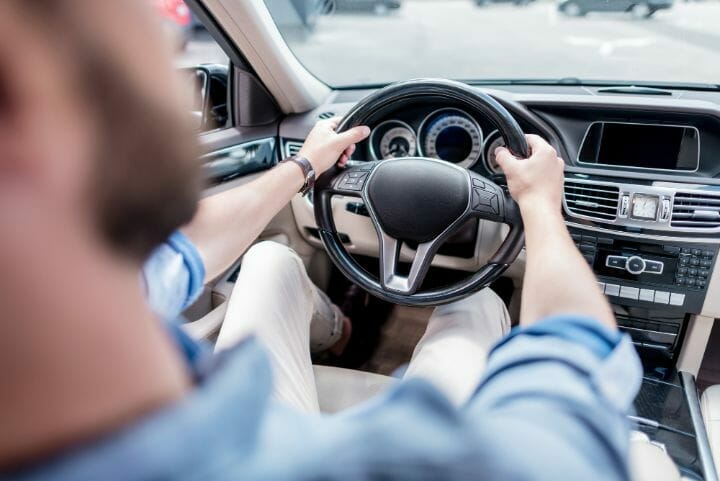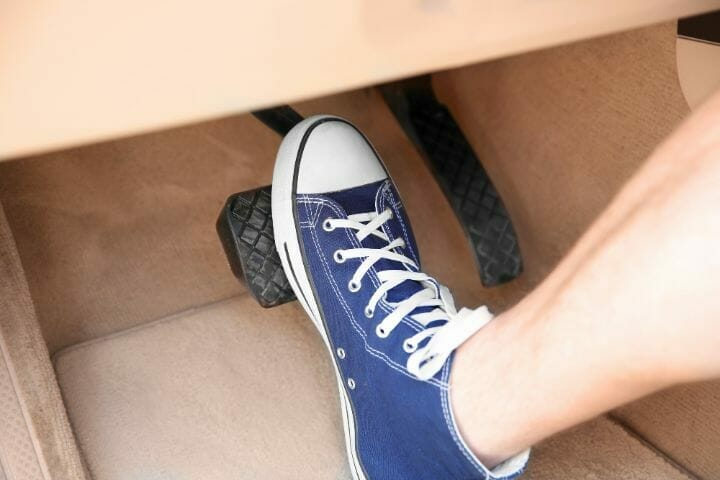Total knee replacement, also known as total knee arthroplasty (TKA) involves cutting out the damaged cartilage and bone from the kneecap and replacing it with a prosthesis or an artificial joint.
The new joint is created with high-grade plastics and polymers, and metal alloys. Most often, people undergo this surgical procedure to relieve excruciating pain, caused due to some form of arthritis restricting their movement.
This surgery is common today, and with medical advancements as compare to knee surgery in the past, there is an excellent recovery rate. However, you have to be patient with the recovery process. A common question for those of you undergoing knee replacement surgery is, “ How soon can I start driving after the surgery?”
The short answer for this is – most of you will be able to drive, walk, and even do some sports like skiing. and running after the surgery, but the recovery is slow, taking up to 4-8 weeks.
Let’s find out more about the factors influencing your return to driving independently and the precautions to take once you are back on the wheel.
Contents
Factors Influencing Recovery Time for Driving After TKA
Most patients have better mobility and knee function after a TKA or a partial knee replacement. They can resume routine activities of daily life like driving a car after the surgery.
However, there are some temporary restrictions for foolproof recovery. Certain factors influence the recovery time and aid or slow down the progress.
Read our article on Recliners to Use After TKA
1. Age
Age plays a pivotal role in the recovery process. The younger you are, the less is the time taken to heal the knee and adjust it to the new artificial joint.
As per the American Joint Replacement Registry (AJRR), since May 2020 about 1.7 million patients have undergone knee and hip replacement surgeries.
By 2018, the average age of patients coming in for total knee replacement was 67 years, 64 years for partial knee replacements, and 66 for repeat surgeries.
Thus, the average age of people undergoing knee replacement surgeries is in the 60-70 years age bracket and these patients usually need to do a TKA due to osteoarthritis, a degenerative disease.
However, studies show that many younger people are also undergoing knee replacement due to juvenile arthritis (joint inflammation in children). The recovery time taken for this age group is much faster than those in their mid-60s and beyond.
By the way, we also wrote an article on what age group qualifies for Medicare.
2. Operative Side
The knee being operated upon also plays a crucial role in the recovery timing. As per the American Academy of Orthopaedic Surgeons, a minimum of 6-8 weeks are required for right-sided TKA, while left-sided TKA needs at least one week.
The left knee replacement can get you behind the wheel faster as it is only used to operate the clutch. However, driving after the right knee replacement surgery can take much longer because the leg needs to get stronger to handle the accelerator and brakes.
The most vital factor to consider is that the pre-surgical reflexes and muscle strength are a lot more.
You might also like Best Knee Pillows After Knee Replacement
3. Weight
The knee is a weight-bearing joint, and hence, those who weigh more, get a lot of pressure on their knee. This can also have adverse effects on recovery post-TKA.
Increased body weight causes stress to the surrounding bone where the TKA has been administered, leading to poor recovery and a higher rate of failure.
Also, during driving there is continuous use of the leg while pressing the brake, clutch, and accelerator, adding to the pressure on the knees.
Thus, losing weight is an integral part of the recovery process and this is something that can be worked upon even as preparation for the knee replacement surgery itself.
You might also like Best Pickup Truck Running Boards For Seniors in 2021
4. Narcotic medicines
Doctors recommend not driving until you are on narcotic pain medication like Opioid, Naproxen, and others. These drugs have a sedative effect and can affect your mental alertness and reaction time.
You surely don’t want to be caught napping when behind the wheel, compromising your safety and that of others. Therefore, wait until the effect of the medicines wears off before taking off in your car.
5. Type of car
The kind of car also decides when you can get behind the wheel. Those of you with an automatic transmission car can start driving in as little as two weeks as there is no need to constantly change gears and stress your leg with the shift between accelerator, brake, and clutch.
However, if you have a manual transmission car, it will take as long as 6-8 weeks to regain muscle strength to manage the transition between the three pedals.
You might also like Best Ice Packs for Knee Replacement Surgery
Advice on Driving After Knee Replacement
You might want to hit the accelerator button and take to the road, but that will only aggravate matters. It is best to keep in mind the physician’s recommended time of recovery and slowly tread towards the path of complete recovery.
Here are a few tips to gently break into the driving routine-
1. Firstly, only go ahead with driving once you get the green signal from your orthopedic surgeon.
2. Get a disabled parking placard, especially if you have been asked to use a walker or any other assistive device. It will shield you from walking long distances in poor weather and otherwise. Each state in the US has its own rules for applying for this facility. You will need to check with the state’s Department of Motor Vehicles (DMV) for the state-specific process.
3. Drive with caution as reaction times and braking force can be low for many months after the surgery.
4. Recline your seat a little more than usual to get more leg space. More leg space shall help flex out the muscles while you are cruising and allow you to straighten the knee.
5. If you are on a long journey, include a lot of pit stops. It will help you stretch your legs, relax the muscles, and improve blood circulation.
6. Ditch your expensive sedan or sports car, if you have one and go in for a more spacious SUV. The former is tough to get in and out of, putting more pressure on the knee. In an SUV, you have more legroom, and the seating is more comfortable too.
You might also like Yoga After Knee Replacement
Conclusion
Anyone undergoing knee replacement surgery would want to resume normal activities as soon as possible, with driving being an essential life skill for complete independence.
After all, you don’t want to be relying on friends and family for your basics. If you follow all the care and precautions needed after the surgery, you will be able to race like a Formula One driver within 6-8 weeks!
The crux is to be patient. Remember- Slow and steady wins the race!




